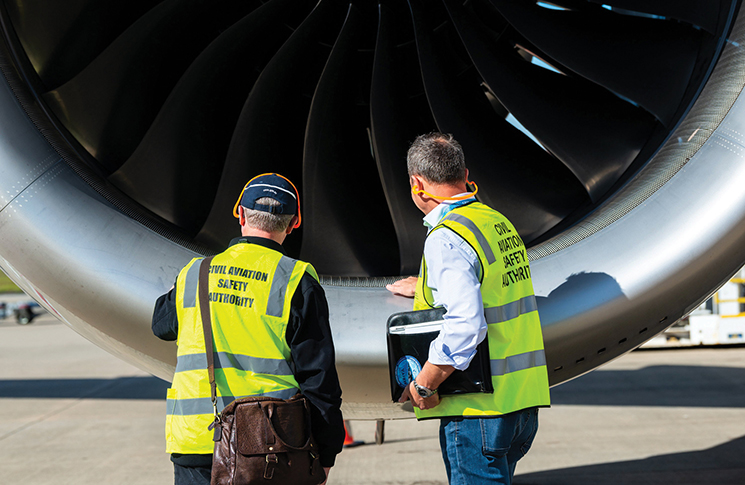In aviation, a safety management system (SMS) and safety culture go hand in hand. They have a symbiotic relationship – neither can function effectively without the other.
An organisation with a poor safety culture invariably has staff that are more likely to have a lax attitude towards safety and cut corners to get tasks done. In the absence of documented processes and procedures that clearly outline job responsibilities, accountabilities, and safe working practices, staff may become disengaged, increasing the likelihood of risky behaviour.
An organisation’s safety culture directly impacts safety performance and is arguably the single most important influence on the management of safety.
For a SMS to be effective and sustainable, a positive safety culture is essential. This requires strong advocacy from organisational leaders and an empowered workforce composed of skilled and committed employees.
So how does this work in practice?
Understanding safety management systems (SMS)
A well-functioning SMS is the cornerstone of aviation safety. Its primary role is to identify and mitigate hazards and associated risks through a structured, scalable approach. An effective SMS represents an organisation’s commitment to managing safety and the pursuit of its continuous improvement by all.
The SMS framework is built on 4 pillars:
- Safety policy and objectives – Establishes the organisation’s safety intentions and goals.
- Safety risk management – Identifies, assesses and mitigates risks to an acceptable level.
- Safety assurance – Monitors and evaluates safety performance to ensure continual improvement.
- Safety promotion – Encourages safety awareness and communication throughout the organisation.
Together, these pillars create a comprehensive safety framework, ensuring all operations are conducted within an acceptable level of risk.
Whether it’s a large commercial airline, a major airport, regional aerodrome, or a small operator – every aviation organisation benefits from implementing a SMS that aligns with its unique operational requirements.
Staff working within an organisation are required to understand their obligations towards carrying out work within the parameters of the SMS and be advocates of its principles.
For a SMS to ultimately be successful, management must foster a positive organisational culture, as this will have significant influence on attitude, development, implementation and ongoing effectiveness of the SMS.
A positive safety culture is where there is a shared concern for safety by everyone, with a commitment to manage risks and accountability for safety is routinely promoted by not only management but all staff.
Culture and its influence on safety
Organisational culture has a major impact on how a company is run, how happy the employees are, and how safe they feel carrying out their responsibilities.
Positive safety culture isn’t something you can purchase off the shelf. It is formed over time by organisational, professional and national cultures, along with a concerted effort from managers and staff to establish policies and procedures. A positive safety culture demonstrates ‘the way things are done around here’. It cultivates an environment of trust, honesty, collaboration, and provides a sense of community and accomplishment for staff. When staff feel valued and supported, they are more willing to embrace safety policies and principles.
However, situations where profit is clearly prioritised over safety creates conditions which are detrimental to the development of a strong safety culture. For example, failing to enforce documented rest periods or tolerating excessive work hours signals to staff that safety is secondary, increasing risk and bringing management’s commitment into question.
Leadership: The cornerstone of safety advocacy
The role of leadership, particularly the CEO, is critical in shaping a positive safety culture. The CEO must champion safety initiatives, set clear standards of acceptable conduct, and have ultimate oversight of the SMS. All decisions related to safety must be disseminated down the line by responsible managers, and managers must place trust in their staff to perform their roles safely.
Cherie Love, Safety Performance Specialist at CASA says that when a positive safety culture is visibly supported by upper and middle management, front-line staff develop a sense of shared responsibility towards achieving the organisation’s safety objectives.
‘It becomes embedded within the organisational culture and underpins the normal way of doing things’
‘To enable a positive safety culture, management need to be the leaders, actively motivating staff to care about safety, not just by talking about it or signing a safety policy but by acting as safety role models and modelling ideal safety behaviours,’ Love says.
Organisations that deprioritise safety in favour of profit often experience deterioration in safety outcomes, as employees feel pressured to meet unrealistic (and unsafe) demands, for fear of reprisal.
Empowering the workforce for safety success
Staff are the backbone of an organisation. Empowering staff to do their jobs safely greatly contributes to a positive culture. When staff feel empowered in their role, their sense of responsibility and accountability increases. If there is clarity around what is to be expected in workers’ roles, it eliminates the potential for ‘guess work’ and taking/accepting risk. Professional development opportunities, combined with open channels for feedback on the SMS, strengthen accountability and commitment.
By involving staff in the development and refinement of safety polices, organisations cultivate ownership and promote proactive safety behaviours. In a positive safety culture, staff feel enabled and encouraged to speak up and report safety concerns. This means not only reporting incidents or accidents but they also feeling safe to question organisational and work-related practises for potential impacts to safety, or areas where safety improvements can be made.
Ultimately, the success of an SMS depends on the attitudes and behaviours of the people who implement and participate in it. When an organisation fosters a positive safety culture, it creates a strong foundation for its SMS, enabling continual safety improvements and enhanced operational performance. A well-integrated SMS not only ensures compliance but also demonstrates the organisation’s commitment to safeguarding lives and assets.
Love says, ‘A key indicator of a poor safety culture is when safety improvements are only made because of accidents or when they are mandated by regulations and not from actively seeking safety information from your staff to stay abreast of important safety information and proactively identify hazards’.
Continual improvement – A living SMS
A SMS is not a static document but a living, breathing system that requires consistent review to ensure it is meeting the needs of the organisation and its staff. When an organisation fosters a positive safety culture, it creates a strong foundation for its SMS, enabling continual safety improvements and enhanced operational performance.
Positive safety culture encourages honest and open reporting, enabling valuable insights into aspects of how a SMS can be improved. It’s a self-perpetuating cycle, that if done well, benefits staff, clientele, and the way the organisation is regarded by the public as a whole.
Safety culture is the link between peoples’ safety behaviours and the effectiveness of your SMS. An SMS will not be effective unless there is a positive safety culture, which in turn determines how your people will contribute to the SMS and what they think about it.
More information
Useful resources including a kit with videos to help you develop your Safety Management System are available on the CASA website.





